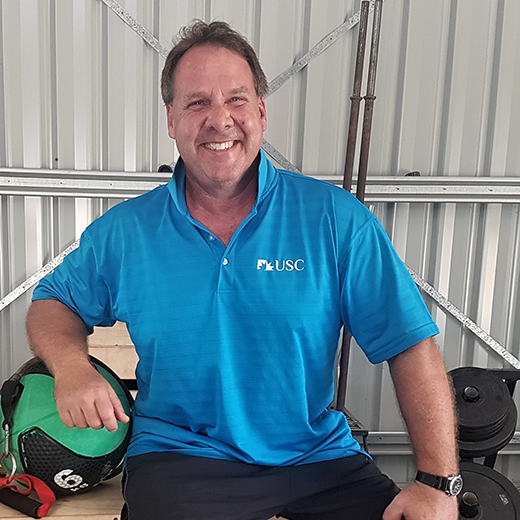A USC Sports academic has put health and physical education (HPE) teachers through their paces at an international conference to encourage them to rethink the way they teach sprinting and speed skills.
Lecturer in Sports Studies Dave Robinson also promoted ways to effectively use strength and conditioning techniques in schools when he led two active workshops last week at the Australian Council for Health, Physical Education and Recreation conference in Canberra.
“The challenge is getting students to engage with sprinting. Because it a high-intensity activity – basically it’s exhausting – some students don’t enjoy it and may avoid it because they might not compare well with others,” Mr Robinson said.
“The approach I take gets students to break down sprints into 2-3 second segments and includes strategies and activities to get them to embrace sprinting, regardless of their speed and ability.”
“It works by shifting their focus to their own performance. Specifically, we experiment with techniques and activities they can try to improve their rate of metres per second.”
The Fraser Coast-based HPE teacher with over 20 years’ experience working with students and elite junior athletes said the ability to quickly take off, accelerate, decelerate and change direction provided the foundation for participation in most sporting activities.
Mr Robinson, who is an accredited Level 2 strength and conditioning coach, also wants educators to pack more punch into health and physical education classes in schools.
His second workshop at the conference at the Australian Institute of Sport in Canberra covered practical strategies to incorporate strength and conditioning (S&C) into schools – even at primary school level.
“Many people automatically associate strength and conditioning with elite athletes lifting weights and this is a very limited view,” Mr Robinson said.
“Lifting very heavy weights can be detrimental to growing bodies but it is important to recognise that S&C can involve activities that do not require pumping iron to improve aerobic endurance, muscular strength and endurance, power, speed, agility and flexibility.
“All of these can be developed to help students in terms of their physical performance and associated benefits such as improved self-confidence, willingness to be involved in sporting activities and improved physical health.”
The workshop included activities to boost student engagement in S&C and demonstrated modifications to cater for primary-aged students.
— Clare McKay
Media enquiries: Please contact the Media Team media@usc.edu.au

